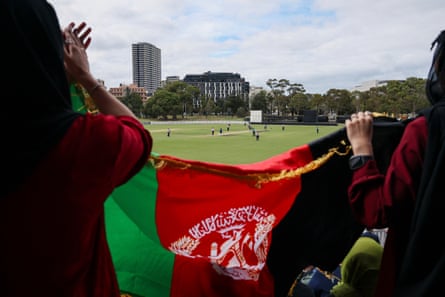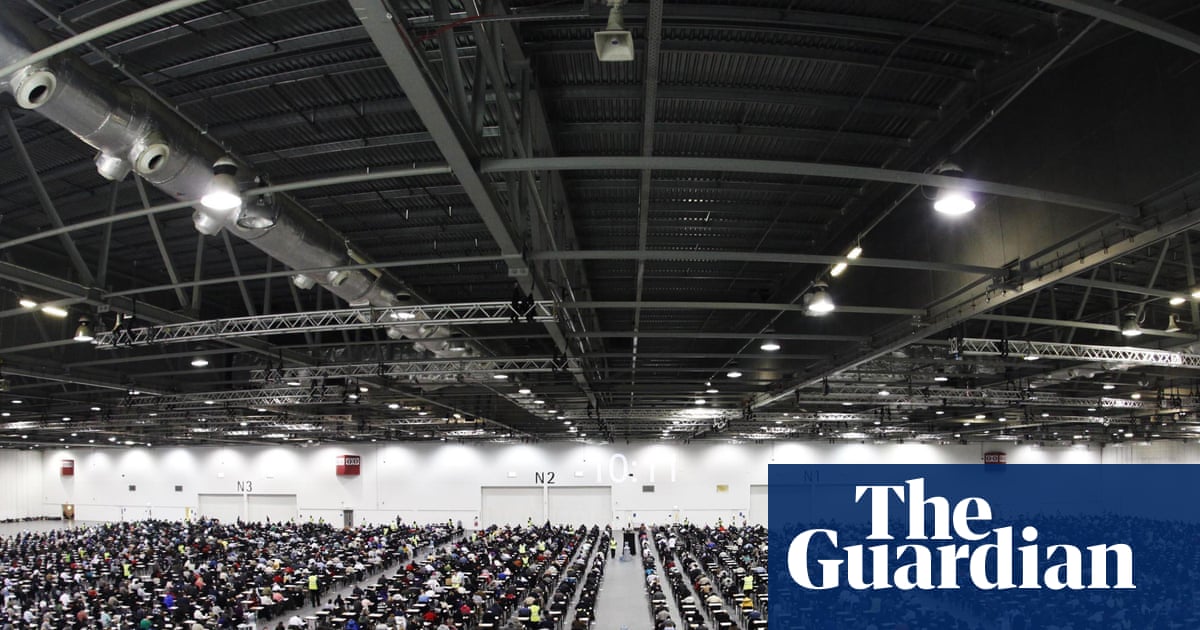Sixteen-year-old Fawzia (a pseudonym) is writing to the Guardian from her home in Afghanistan. It is her home and also her prison. She doesn’t leave it much these days.
But she does have a bat, and a ball, and spends her days training with her four sisters in the small garden and the courtyard of her house. Sometimes, when the Taliban are in the street outside, they train in the basement, so no one can hear the sound of young women having fun.
“My only happiness is this,” she says, “and, my only hope and dream is to play international cricket. It doesn’t matter whether I play as a free player in a league or as part of the Afghanistan women’s team – my one true wish is to play on an international field. That brings me the greatest joy. But right now, there is no chance for me.
“We do not feel safe in Afghanistan because at any moment the Taliban might find us. I feel hopeless about the Afghan government and the cricket board, because no matter how much we try to find a way, there seems to be none.”
Since Afghanistan was handed back to the Taliban just over four years ago, women’s rights have disappeared. There is no cricket for girls – in fact no sport at all. There is no secondary school, no university, no dancing, almost no employment. Beauty parlours were shut last year, clandestine beauty parlours cracked down on this year. Women may no longer take a walk in a park alone, they cannot sing in public, or let their singing be heard through an open window. They cannot go to the gym. They may not train as a midwife or a doctor, but nor may they be treated by a man. They may not talk loudly, they may not take a taxi without an escort, they may not stand by a window and watch the forbidden streets go by.
They may not make eye contact with a man who is not a relative, they must cover themselves completely if they leave the house. Reports from the recent earthquake in Kunar and Nangarhar suggest some women have been left untreated by rescue workers because of the Taliban’s rule on contact between unrelated men and women. UN Women estimates that impediments to Afghan women receiving healthcare could increase maternal mortality by more than 50% by 2026.
“It is very difficult,” says Fawzia. “Girls in other countries have all their rights in education and sports, but we cannot do anything. Every day passes like this, and our lives remain the same.”

After the Taliban returned, members of the nascent Afghan cricket team were evacuated due to the astonishing efforts of Dr Catherine Ordway, Emma Staples and Mel Jones – who won the MCC’s Spirit of Cricket award in April for their work in bringing the young women and their families to Australia. Jones and Staples also set up Pitch Our Future, a charity that works to support the playing, mental and physical needs of the young refugees, and helped organise a T20 exhibition match against a Cricket Without Borders XI in January at the behest of outgoing Cricket Australia CEO Nick Hockley. It was the first time that the young refugees had played together in a team since leaving Afghanistan.
And soon the women will tour again. They are due to fly to India for the Women’s World Cup, which starts at the end of this month, in order to watch some games and play some friendlies. A tick in the International Cricket Council’s box, after their positively snail-like efforts to the support the team in exile.
While the ICC have continued to support and fully fund the Afghanistan Cricket Board (ACB) against their own constitution – part of the criteria for full membership is to have women’s team and pathway structures – they have been hesitant to support either an Afghan women’s team, which would “need” approval by the ACB, or a refugee team in exile. There was, at last, movement in April, when the ICC announced a taskforce to support displaced players, a dedicated fund and a high-performance programme offering advanced coaching.
after newsletter promotion
Ordway says these measures are yet to be felt on the ground. “It’s the minimum they could possibly offer,” she says. “It’s taken far too long, and equates to far too little – so far. Compare the ICC’s efforts to Fifa, who have allocated 17 staff to support the Afghan women’s football team and conducted three training camps – it is not enough, but it is a start.
“Afghan women athletes inside Afghanistan want the world to know they exist, and for their voices to be heard. Those who have been forced to leave their country seek formal recognition, at very least to play as a displaced/refugee team. They are seeking support to train, have talent identification and selection camps involving Afghan women from around the world, and to play in real competitions – not just friendly matches. Imagine if the Afghan sport federations were obliged to hand over half their funding for their displaced women’s and girl’s teams.”
Back in Afghanistan, Fawzia talks about playing cricket at school as if she was an elderly woman looking back at her childhood. “It was a lot of fun back then. We had two teams, almost 74 people – half in one team and half in the other. At that time, we could play shots as we wanted and enjoyed a lot. But now, we can’t play free shots or talk loudly because the Taliban might hear us. I always pray that no one ever has to live a life like mine.”
-
This is an extract from the Guardian’s weekly cricket email, The Spin. To subscribe, just visit this page and follow the instructions.

 3 months ago
45
3 months ago
45

















































